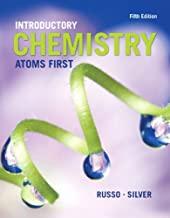Some reactions have rate laws that include a product concentration raised to the 1 order. An example
Question:
Some reactions have rate laws that include a product concentration raised to the –1 order. An example of that is the hypothetical reaction A + B + E → D + F where the rate law is: Rate = k[A][B][E][D]–1
This can also be written equivalently as: Rate = k[A][B][E]/[D]
What effect does an increase in product D concentration have on the rate of such a reaction? Explain how you figured this out.
Fantastic news! We've Found the answer you've been seeking!
Step by Step Answer:
Related Book For 

Introductory Chemistry Atoms First
ISBN: 9780321927118
5th Edition
Authors: Steve Russo And Michael Silver
Question Posted:





